As Star Trek: Deep Space Nine‘s Captain Benjamin Sisko (Avery Brooks) was one of Star Trek‘s most complex Captains, he has numerous best DS9 episodes to choose from. Sisko was a single father to Jake (Cirroc Lofton), a widower, a Starfleet officer, and a religious figure and many of his episodes centered around the clash between these aspects of his character. As DS9‘s Dominion War arc gathered steam, Sisko demonstrated the ways in which he was a very different Star Trek Captain from his predecessors.
Like Captain James T. Kirk (William Shatner), Sisko was a maverick who would bend the rules to save lives. On occasion, Sisko would go much further than merely bending the rules, but he was always able to justify his actions in the context of the greater good. Sisko’s flexible approach to Star Trek‘s Prime Directive emphasized his differences from Captain Jean-Luc Picard (Patrick Stewart). Picard and Sisko never resolved their differences, but Sisko went on to prove that Picard’s rigid adherence to the Prime Directive was not always in the best interests of the Federation. Here are 10 of the best Captain Sisko episodes across the seven seasons of DS9.
Contents
- 1 10 Season 3, Episodes 11 & 12, “Past Tense”
- 2 9 Season 7, Episode 4, “Take Me Out To The Holosuite”
- 3 8 Season 2, Episodes 20 & 21, “The Maquis”
- 4 7 Season 5, Episode 10, “Rapture”
- 5 6 Season 4, Episodes 10 & 11, “Homefront”/”Paradise Lost”
- 6 5 Season 1, Episode 1, “Emissary”
- 7 4 Season 6, Episode 11, “Waltz”
- 8 3 Season 4, Episode 3, “The Visitor”
- 9 2 Season 6, Episode 19, “In The Pale Moonlight”
- 10 1 Season 6, Episode 13, “Far Beyond The Stars”
10 Season 3, Episodes 11 & 12, “Past Tense”
“Past Tense” established Sisko’s fascination with 20th and 21st-century history, and his empathy for those who were victims of social inequality in those less enlightened times. Sisko’s passion for social history would eventually lead to another of Sisko’s finest episodes later in the series. However, “Past Tense” was a more typical Star Trek story about Sisko, Dr. Julian Bashir (Alexander Siddig), and Lieutenant Jadzia Dax (Terry Farrell) being stranded in the past, attempting to survive without changing the course of history. DS9‘s Bell Riots story foreshadowed how Sisko would bend Starfleet rules to protect the future when he and Bashir inadvertently caused the death of Gabriel Bell (John Lendale Bennett), a political activist and hugely influential historical figure.
Sisko was forced to assume the role of Bell so that the riots and ensuing hostage situation could lead to the dismantling of the Sanctuary districts. Sisko knows exactly what to do because his younger self read all about the Bell Riots and the role that Gabriel Bell played, which created a causal loop. “Past Tense” is a great Sisko episode because it showed his passion for equality and displayed how he copes under pressure. “Past Tense” also reaffirms the genius of Star Trek by using sci-fi concepts like the bootstrap paradox to tell a culturally relevant story about social inequality and urban degradation.
9 Season 7, Episode 4, “Take Me Out To The Holosuite”

After Jadzia Dax was killed off and the Bajoran Prophets turned their back on Sisko in DS9‘s season 6 finale, “Take Me Out to the Holosuite” was a much-needed change of pace. It focused on a baseball game between the DS9 crew and the Vulcan crew of Sisko’s old rival Captain Solok (Gregory Wagrowski). Sisko’s passion for baseball and determination to defeat Solok put him at odds with his team, the Niners. There’s no huge spiritual conflict, no huge battle against the Dominion, but “Take Me Out to the Holosuite” speaks volumes about Sisko’s character.
Sisko’s love of baseball is well documented, most notably when he left his baseball behind to warn DS9‘s Cardassian villains that he would return to retake the station. His passion and determination to defeat his old rival are emblematic of Sisko’s determination to win the Dominion War. However, it’s also one of the rare moments in which Sisko and the DS9 crew can relax, and there’s a lot of comedy mined from a team of Trill, Ferengi, Klingon players learning how to play baseball. He values and needs his crew, and the scene where he receives the signed baseball is a genuinely touching moment.
8 Season 2, Episodes 20 & 21, “The Maquis”
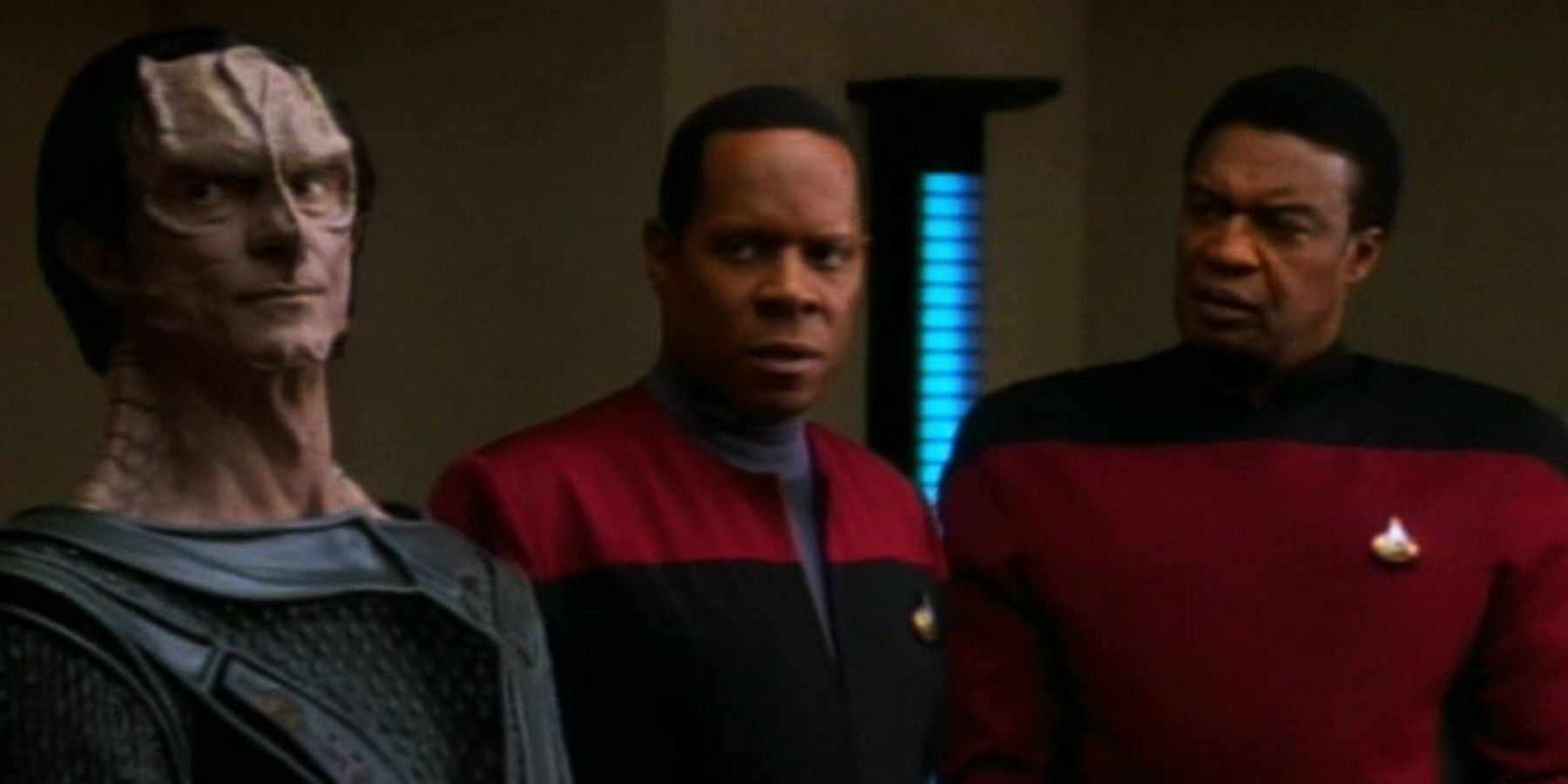
The main story of DS9‘s early years was that of the aftermath of the Federation-Cardassian War. The Cardassian withdrawal from Bajor and Terok Nor laid the groundwork for Bajor’s possible entry into the Federation. However, the handling of the Federation-Cardassian Treaty also caused an intergalactic outcry and forced many Starfleet officers to reconsider their positions. One of these officers was Lieutenant Commander Calvin Henderson (Bernie Casey), an old friend of Sisko’s and a Federation attaché who led a double life as the leader of the Maquis terrorist organization.
“The Maquis” brilliantly sets up Sisko’s later internal conflict as both Bajoran Emissary and Starfleet officer. Like Cal, Sisko also struggled to reconcile his responsibilities to Starfleet with his position as a religious figure to the Bajoran people. Sisko clashed with his former friend over his role in the Maquis, when Cal asked him to use DS9 as a Maquis repair station. The most telling bit of foreshadowing is when Sisko angrily tells Cal that, by joining the Maquis, he’s throwing away his life. Cal simply replies that he is “beginning a new one“, foreshadowing Sisko’s DS9 ending where he ascends to the Celestial Temple, his work for Starfleet completed and his work for the Prophets only just beginning.
7 Season 5, Episode 10, “Rapture”
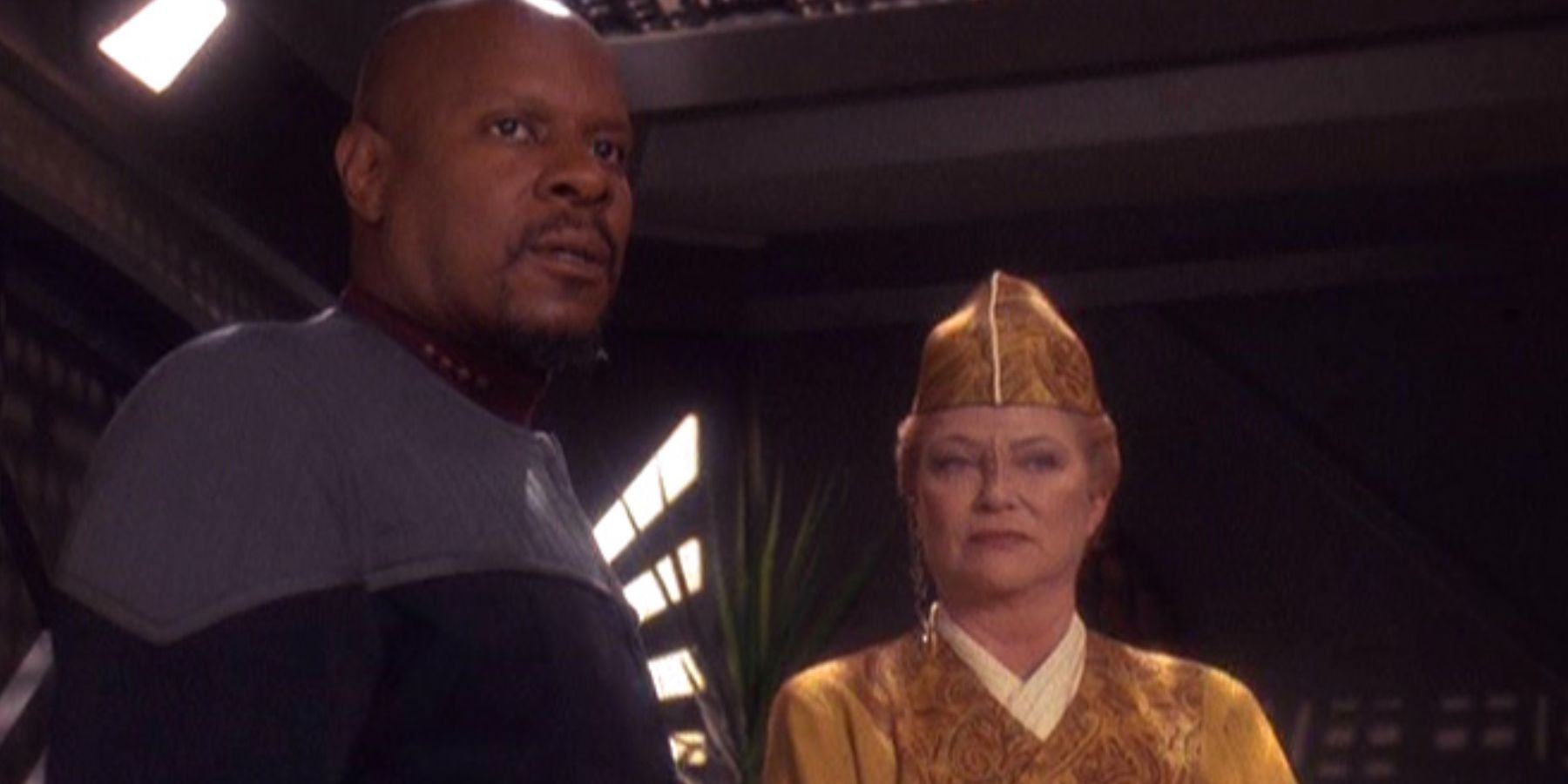
Sisko’s conflict between his dual responsibilities as Emissary and Starfleet officer comes to a head in “Rapture”, in which he begins receiving troubling visions on the eve of Bajor’s entry into the Federation. The visions warn of Bajor’s destruction but begin to have a damaging effect on Sisko’s health. Pushing himself to understand the visions, Sisko eventually declares that Bajor must stand alone because their Federation membership would put them at risk of devastating recriminations from the Cardassian-Dominion alliance.
Despite almost killing himself to deliver his dire warning, Sisko receives pressure from Starfleet to convince the Bajorans to join, regardless of his troubling visions. Sisko’s powers as Emissary would have been influential, but he refused to abuse them to put Bajor in the path of destruction. After risking his life for the Bajorans, Sisko also risked his career in Starfleet by refusing to complete his mission. However, Sisko’s assurances that Bajor would eventually join the Federation ease Starfleet’s concerns and signifies a merging of his dual roles of Emissary and Starfleet Captain.
6 Season 4, Episodes 10 & 11, “Homefront”/”Paradise Lost”
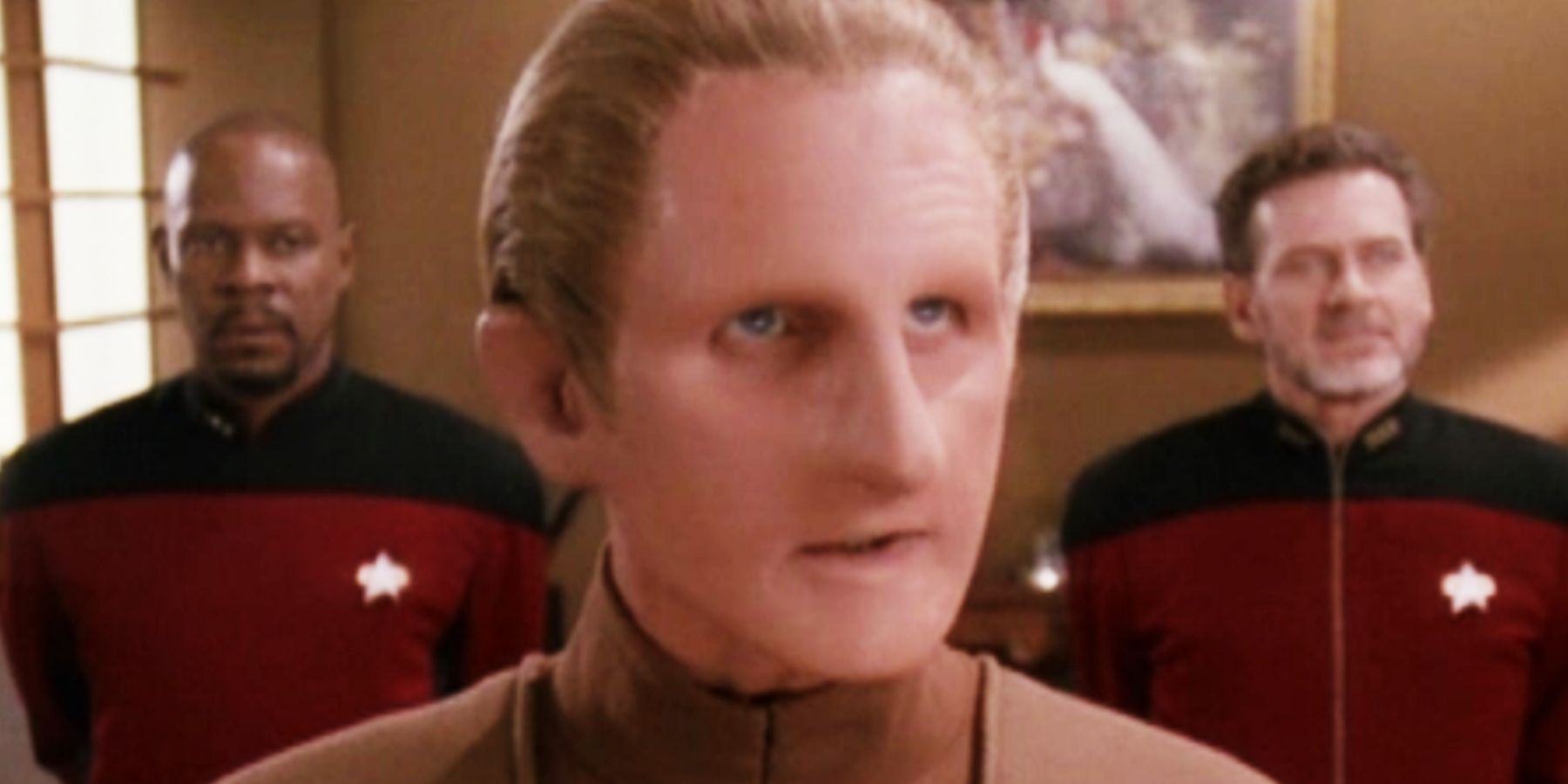
DS9 season 4 was when the show’s Dominion War arc truly began, turning the show into a hugely compelling political thriller. This is evident from the two-parter “Homefront” and “Paradise Lost”, which sent Sisko and Odo (Rene Auberjonois) to Earth when it’s revealed that the Changelings had infiltrated the planet. Over the course of the story, Sisko discovered that his mentor Vice Admiral Leyton (Robert Foxworth) was using the threat posed by the Changelings to implement a military coup and impose Draconian controls. The conflict between Sisko and Leyton over their differing views on confronting the threat posed by the Changelings showed Sisko at his very best.
Benjamin Sisko would become a great military leader during DS9, but he never lost sight of the bigger picture or his humanity. Even when he committed a criminal act to gain the upper hand in the Dominion War, he was tortured by his fateful decision but was eventually able to reconcile it due to the many lives it saved. Leyton and Sisko’s conflict is rooted in the idea that, for the Federation to win the war against the Changelings in DS9, they should sacrifice the very freedom they were fighting to preserve. It’s a complex political debate that is emblematic of DS9‘s more mature tone and demonstrates why Captain Sisko was the best protagonist for the show.
5 Season 1, Episode 1, “Emissary”
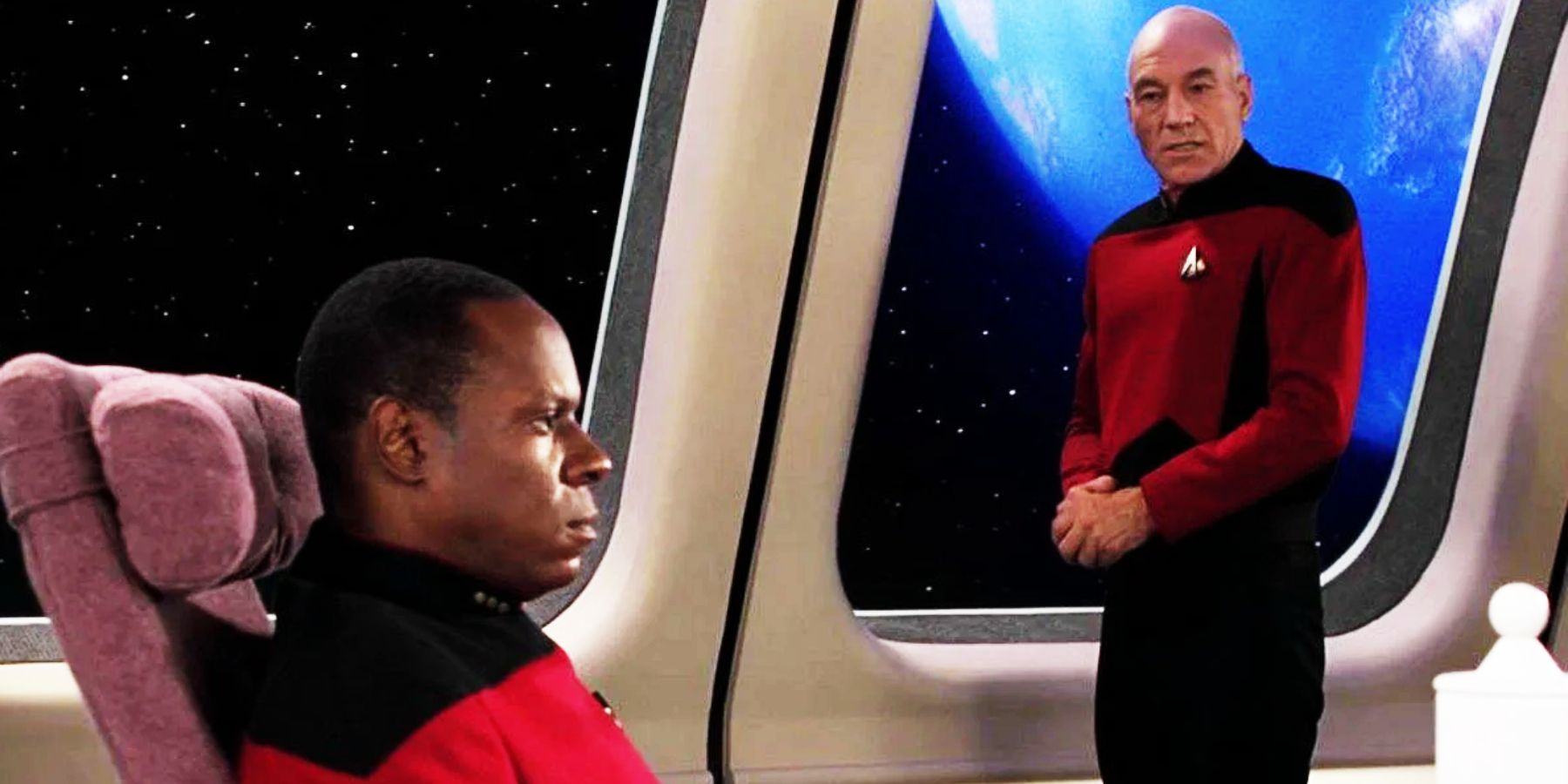
No Star Trek pilot at the time focused so heavily on its protagonist than DS9 season 1, episode 1, “Emissary”. As well as setting up the first spinoff from the hugely popular Star Trek: The Next Generation, DS9 is ultimately the story of a grieving widower and single father who finds his purpose again. Commander Sisko is not convinced that he wants to stay in Starfleet until his encounter with the Prophets gives him direction again by making him the Bajoran Emissary. Sisko’s conflict with Picard emphasized how different DS9 would be from its parent show TNG, and by giving Sisko such an extensive backstory, DS9 often gave actor Avery Brooks much richer thematic material to work with than Patrick Stewart.
The early years of DS9 didn’t go over well with Star Trek fans, who struggled to get on board with the space station setting. However, everything that made both DS9 a great show, and Sisko one of Trek‘s best Captains, is contained with “Emissary”. He’s a Starfleet officer who isn’t afraid to go against orders, is sympathetic to the Bajoran’s plight, and is skeptical about the benefits of their Federation membership. All of these elements would recur throughout DS9’s best Sisko stories.
4 Season 6, Episode 11, “Waltz”
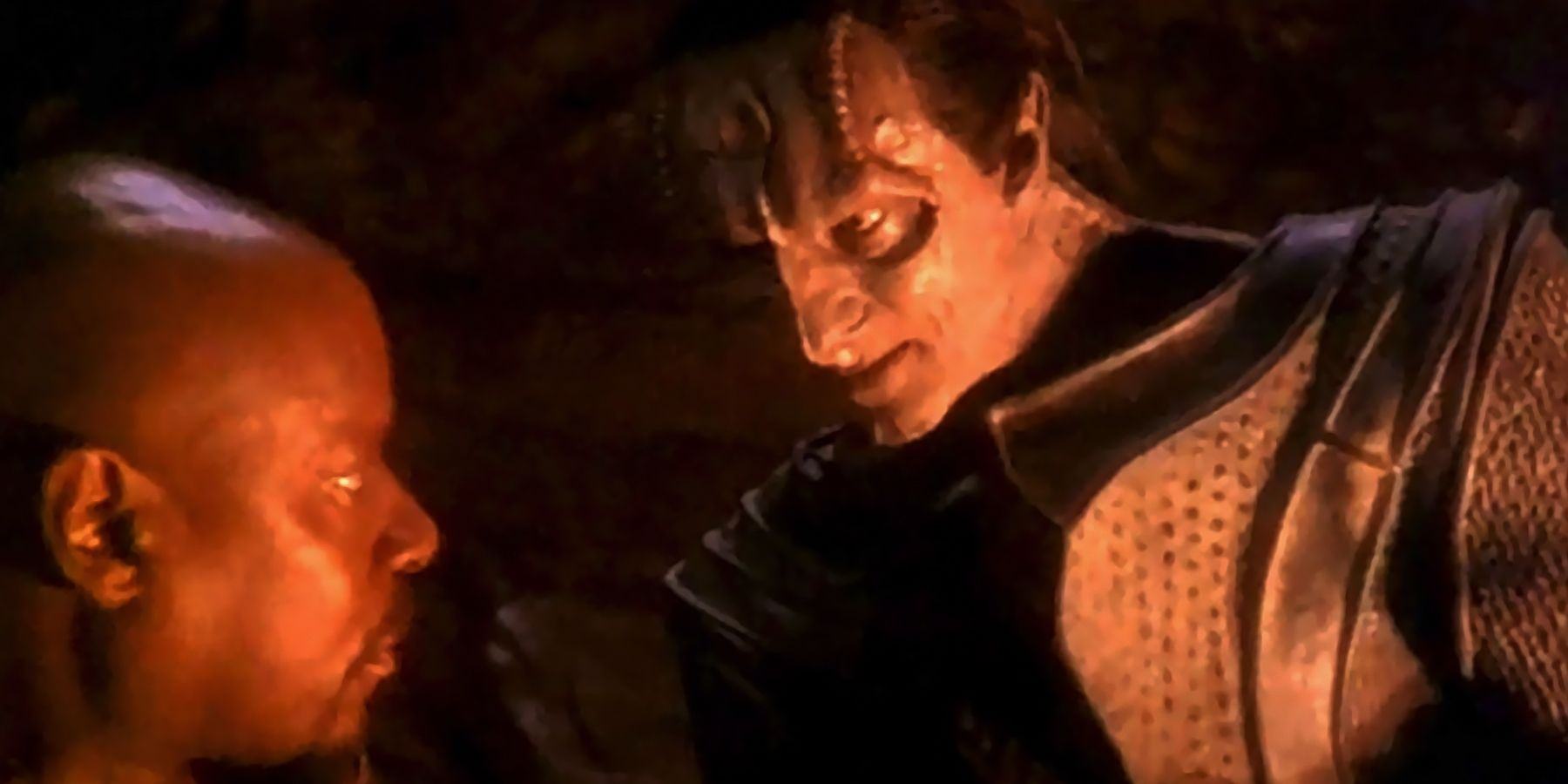
Since Captain Kirk (William Shatner) fought the Gorn in Star Trek, there is a long history of episodes where two characters, in opposition with each other, are stranded on a deserted planet. DS9 was no exception, and one of the best examples of the trope is in “Waltz” when Captain Sisko is marooned on a barren planet with his old enemy Gul Dukat (Marc Alaimo). It’s a gripping character study of Sisko and Dukat’s similarities and differences, foreshadowing their later conflict as representatives of the Prophets and Pah-Wraiths respectively.
Seriously wounded, Sisko essentially became a prisoner of Dukat, subject to his whims. As Dukat rages about his hatred of Bajor, Sisko gains a better understanding of how his enemy sees himself. “Waltz” shows once again how resourceful and level-headed Sisko is, while Gul Dukat lapses further and further into the mania that would carry him through to the pair’s final conflict in the Bajoran Fire Caves.
3 Season 4, Episode 3, “The Visitor”
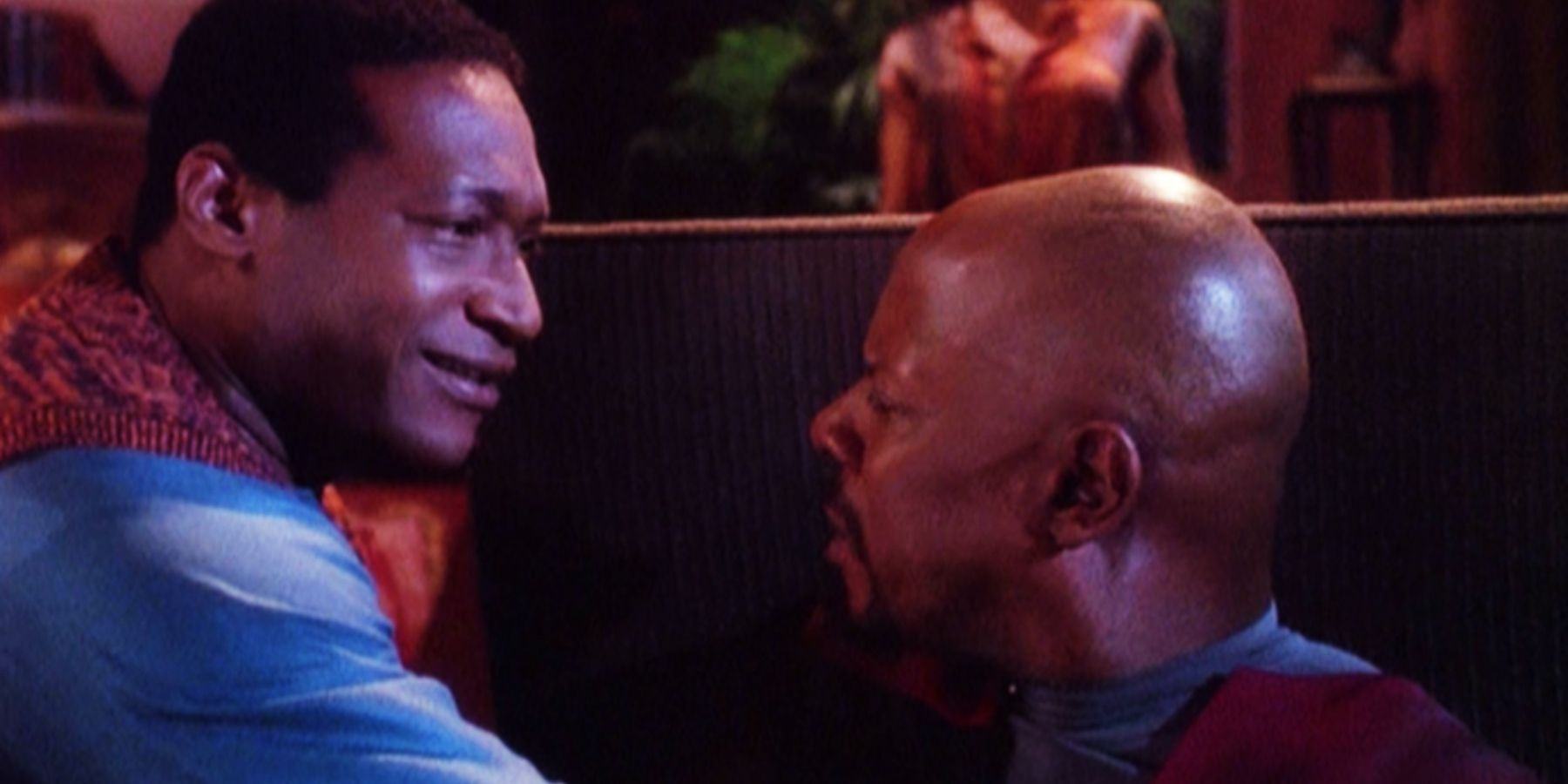
DS9‘s Jake Sisko is the real heart and soul of “The Visitor”, but in showing the impact of Benjamin Sisko’s absence, it’s also one of the best Captain Sisko episodes. Narrated by an older Jake Sisko (Tony Todd), “The Visitor” sees Sisko disappear during a rare wormhole inversion. Jake continued to experience visions of his father, and his obsession with bringing Benjamin back eventually led to Jake abandoning his promising writing career in favor of subspace mechanics.
There is beautiful poetry to the reveal that Jake’s love for his father is the very thing that keeps Ben from being lost forever in subspace. “The Visitor” celebrates one of the best Star Trek father-son relationships. In showing the impact of Benjamin Sisko’s absence, “The Visitor” also emphasizes the importance of positively presenting black fatherhood. Actor Avery Brooks, reflected on this in a 2012 interview with Nashville Scenethat it “was something else you still don’t often see on air“.
2 Season 6, Episode 19, “In The Pale Moonlight”
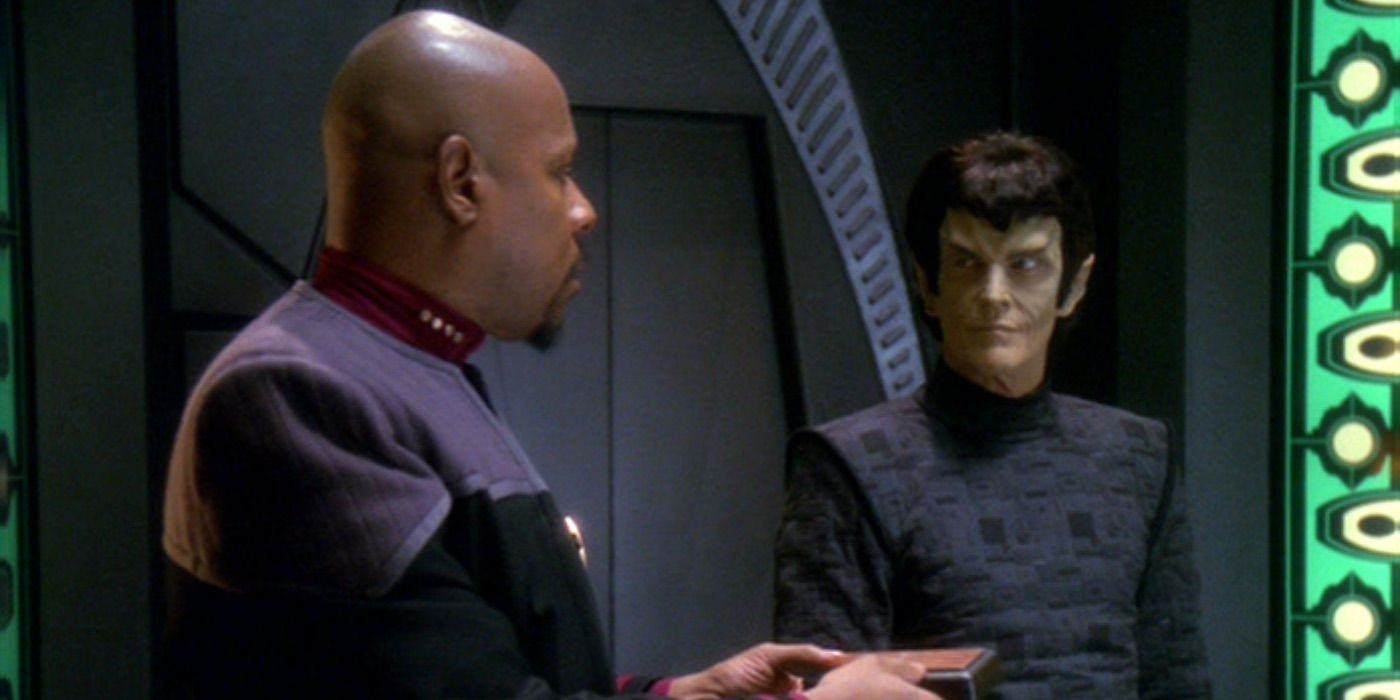
“In the Pale Moonlight” contains Sisko’s darkest moment, and is one of his very best episodes. In the face of mounting casualties during the Dominion War, Sisko resolves to convince the Romulan Star Empire to join the Federation’s war effort. To do so, Sisko takes a page out Admiral Leyton’s book by fabricating evidence of an imminent threat. Recruiting Elim Garak (Andrew Robinson), Sisko oversaw the creation of a falsified holo-recording of a Dominion tactical meeting in which they plan to invade Romulus.
However, Sisko’s plan failed when Senator Vreenak saw through his deception. Acting on his own volition, Garak planted a bomb that destroyed Vreenak’s ship and stopped him from revealing Sisko’s plot. Garak believed that it was necessary as the destruction of the ship would explain the imperfections on the holo-recording. Although Sisko is horrified by this, he ultimately decides that the ends justify the means because the Romulans declaring war on the Dominion could finally turn the tide of the war. It’s a gripping Star Trek morality tale that is the best example of Sisko’s pragmatism and his suitability for the murkier moral world of DS9.
1 Season 6, Episode 13, “Far Beyond The Stars”
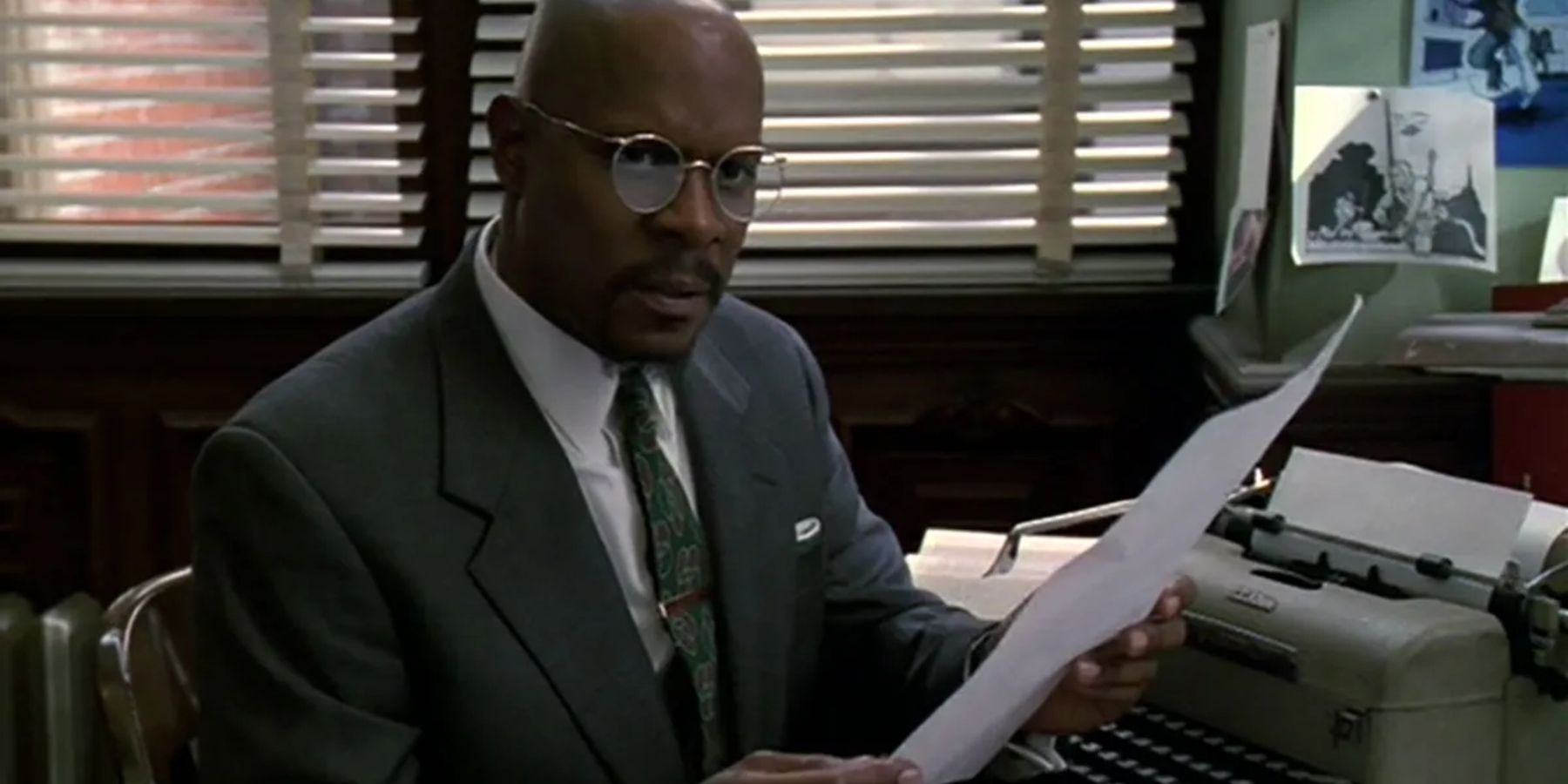
“Far Beyond the Stars” is a masterpiece, and the DS9 Sisko/Benny Russell mystery is both a character piece about Sisko’s doubts about his mission and a timely look at how far contemporary society was from attaining Gene Roddenberry’s utopian vision. The episode was also directed by Avery Brooks, who gave an astonishingly powerful performance as Sisko/Benny, and got similarly evocative performances from his co-stars. As much as “Far Beyond the Stars” is about racism and the oppression of black voices in the mid-20th century, it’s also about Sisko’s own role as Emissary and military leader in the 24th century.
Speaking on the DVD special feature Mission Inquiry: Far Beyond the Stars, Brooks said that Benny Russell “was conceiving of something far beyond what people around him had ever imagined.” The same can be said about Sisko because he was a Starfleet captain who had a direct, if cryptic, line to the gods. “Far Beyond the Stars” is therefore the best Sisko DS9 episode because it exposes the heart of the character, while also representing the importance of representation that was so key to Avery Brooks’ iconic Star Trek: Deep Space Nine Captain.
